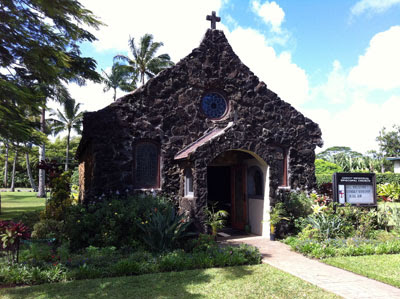The art of engraving goes back to the time of the petroglyphs (c.15,000 BC). But the artistry of engraved seals, which emerged with the Mesopotamian cylindrical seals (c.3300 BC) and was refined by the Greeks in the 2nd millennium BC, marked the beginning of a new artistry in engraving and relief carving. Seals and scarabs found their way onto jewelry in that time. The increasing skill and craftsmanship of carving hard stones and gems lead to the introduction of the cameo, sometime around 332 BC. Sardonyx, a layered stone introduced from India and Arabia, allowed the artisans to carve intricate images with multiple colors by using the strata of the stone.
Early cameos were made primarily from hard stones and sardonyx. Today these cameos are rare and highly collected. Most of the cameos on the market today are carved on shells from the Mediterranean Sea by Italian artists. A small fraction of the 20th century cameos have been made from hard stones, lava or ivory.
 |
| The lava cameo on the left is carved in very high relief, protruding from the surface. The sardonyx cameo on the right shows the effect of an image carved into multiple colored layers. |
Another 20th century innovation in cameos are the plastic and molded glass cameos. While some are truly artistic and beautiful, most are cheap imitations of the sardonyx and shell cameos of the past.
 |
| Three beautiful plastic cameos. L to R: Celluloid or French Ivory cameo on a celluloid chain (1920s); Celluloid plastic bangle bracelet (1920s); Pink and Black Retro cameo (1950s) |
The images on cameos from early times, were of mythical gods and mythological scenes. Kings, warriors and people of stature commissioned cameos in their likeness. Over time, the mythical images of specific gods and goddesses gave way to anonymous mythical characters, and later to artistic renditions of anonymous beautiful ladies, powerful warriors and bacchanalian scenes.
When buying cameos to wear or collect, there are a few important things to look for:
- Quality of the image: The image should be crisp and detailed. Some older pieces may have been worn down over time, which needs to be weighed against the rest of the desirability of the cameo. Poor quality carving always detracts from the cameo.
- Material: There is a heirarchy of cameo substrates for the collector. Knowing which you want and which is used in the cameo of your choice is a critical factor. Hardstone, coral, ivory, lava, sardonyx, onyx and carnelian are all higher ended materials; while plastic and doublets, molded or carved, are the substrates on the low end of the scale. Most are shell cameos.
- Frame: The frame and setting should complement the cameo, not overpower it and definitely not diminish its beauty. Gold and silver frames are preferred, but nicely designed gold-filled or plated metal can be quite good as well.
- Do you like it? This is the most important thing. Never buy a piece you do not like.
At Vintages we have a very nice collection of cameo jewelry as well as a few intaglio pieces. We also have a small selection of Victorian portrait jewelry, a cousin to the cameo made from hand-painted porcelain or photographs imbedded under celluloid.
 |
| This turn-of-the-century lady is wearing a photo portrait pin on her pearl collar. |
Here is a gallery of some the cameos and intaglios we have in stock. Most are available online.
 |
| Sardonyx Cameo Pendant in Sterling Silver Setting ($95.00) |
 |
| L: 10K Gold Shell Cameo Brooch ($195) • R: Contemporary Glass Cameo Brooch ($165) |
 |
| Czech Glass Beaded Clip with Cameo ($95) |
 |
| From top left: Carved Ivory Cameo Pendant ($95); Glass Intaglio Earrings ($195); Glass Intaglio Brooch ($28); Gold over Silver Filigree Bow Brooch with Shell Cameo ($49) |
 |
| 10K Gold Victorian Carved Cameo Rings • Coral (L) & Shell (R) • $95 each |
 |
| Silver Brooch with Scarab Cameo ($65) |
 |
| Victorian Carved Cameo Stickpins • Day/Night Warriors in Layered Onyx ($95) & Lady in Pink Coral ($59) |
 |
| L: Carved Onyx Cameo Earrings ($38) • R: Carved Sardonyx Cameo Earrings ($95) |
 |
| Black Bakelite Cameo Brooches ($49 each) |
 |
| This is one of the many photo portrait pins we have in our Victorian jewelry collection. |






















Comments
Post a Comment